Manufacture of a chitosan-based bioink with gelatin and hydroxyapatite and its potential application in 3D bioprinting
Sarahí Bautista Reberte, Esmeralda Zuñiga Aguilar , Solange Ivette Rivera Manrique
, Solange Ivette Rivera Manrique , Carlos Alberto Martínez-Pérez
, Carlos Alberto Martínez-Pérez
 , Solange Ivette Rivera Manrique
, Solange Ivette Rivera Manrique , Carlos Alberto Martínez-Pérez
, Carlos Alberto Martínez-Pérez
Vol. 19., No.3., Pages 326-338, 2025
DOI: 10.3144/expresspolymlett.2025.23
DOI: 10.3144/expresspolymlett.2025.23
GRAPHICAL ABSTRACT
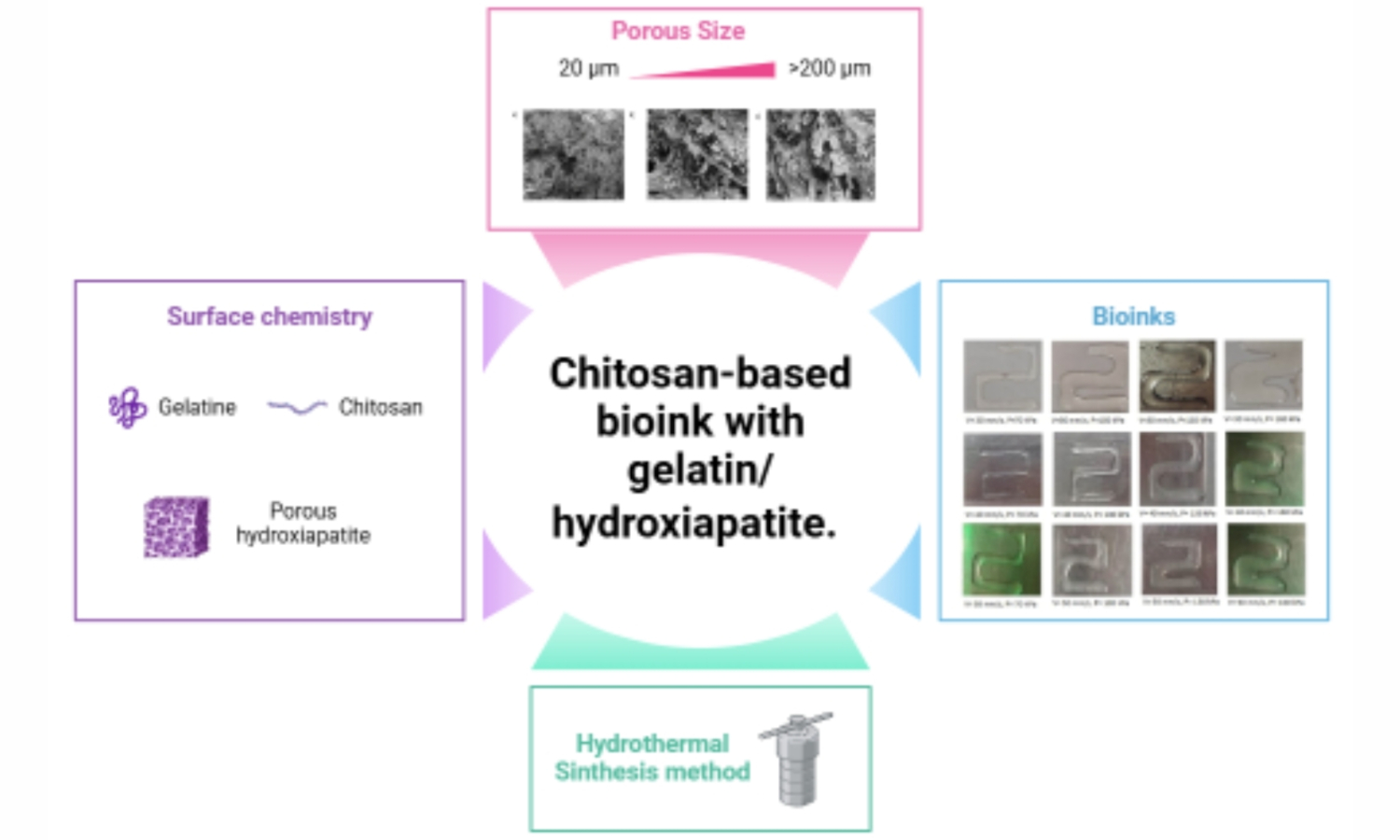
ABSTRACT
Three-dimensional (3D) bioprinting is a technique currently used for creating tissue engineering scaffolds, using bioinks as the building blocks. These bioinks are composed of biomaterials that provide structural integrity and are synthesized from organic polymers to enhance biocompatibility with the printed constructs. In this study, a series of eleven chitosan-based bioinks were synthesized using the sol-gel technique, employing chitosan of low and medium molecular weight. Three bioink formulations were selected based on their viscosity characteristics and further enriched with gelatin and hydroxyapatite (HA) to enhance their mechanical properties. Characterization tests included Fourier-transform infrared spectroscopy (FTIR), thermogravimetric analysis (TGA), scanning electron microscopy (SEM), and rheological assessments. Viscoelastic materials were obtained, and an experimental model was developed to optimize printing parameters, focusing on pressure and printing speed. Our findings indicate that a bioink formulation comprising a blend of medium and high molecular weight chitosan, supplemented with gelatin and hydroxyapatite, was found to be a promising approach for fabricating scaffolds for bone tissue repair.
RELATED ARTICLES
Karol Tutek, Anna Masek
Vol. 19., No.1., Pages 107-121, 2025
DOI: 10.3144/expresspolymlett.2025.8
Vol. 19., No.1., Pages 107-121, 2025
DOI: 10.3144/expresspolymlett.2025.8
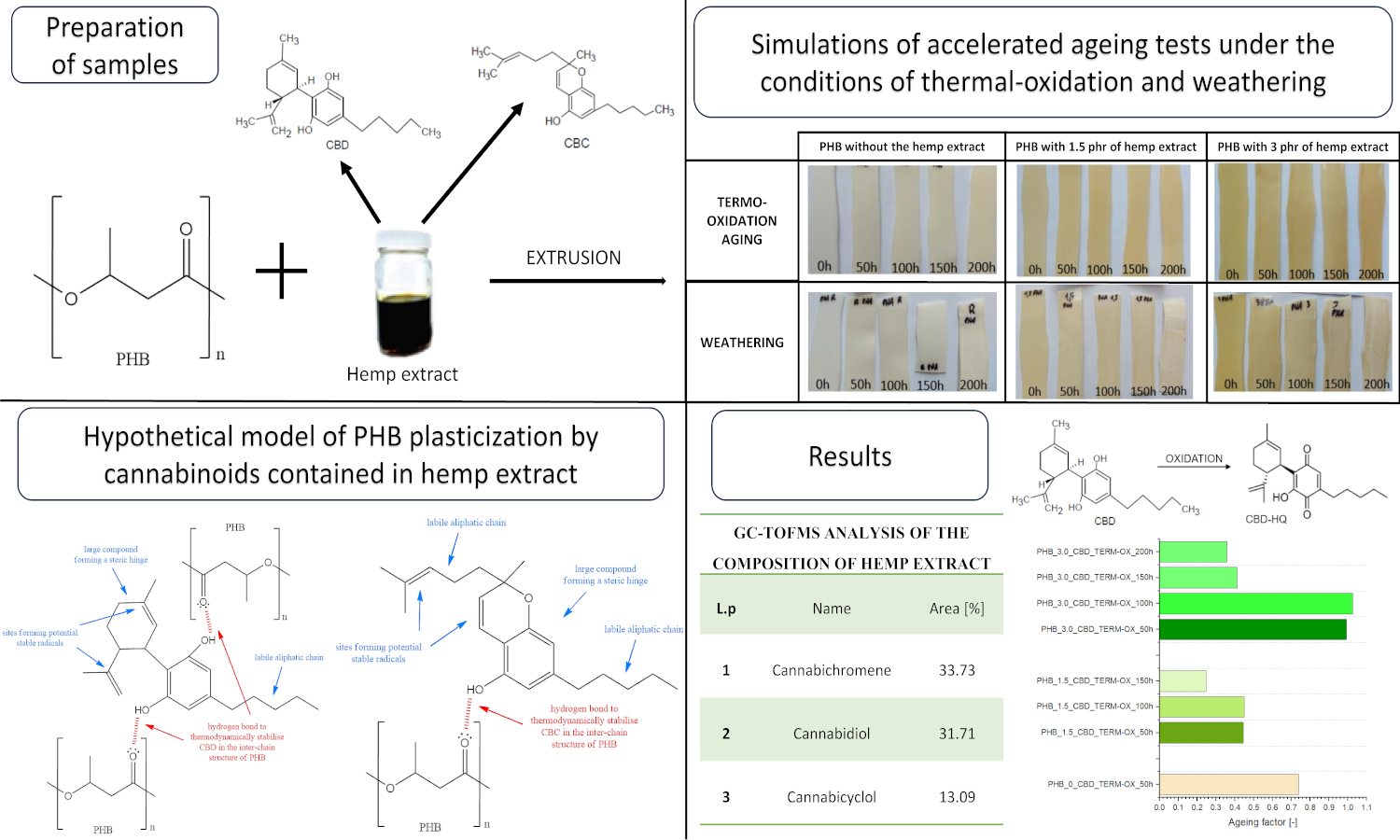
Biodegradable biopolymers like polyhydroxybutyrate (PHB) hold promise for sustainable packaging, but their inherent degradability reduces material stability. Synthetic stabilizers, though effective, raise environmental and potential toxicity concerns. This study explores a multifunctional natural anti-aging agent: a hemp extract rich in cannabidiol (CBD) and cannabichromene (CBC). PHB composites with varying hemp extract concentrations were prepared and subjected to thermooxidative and weathering aging. Characterization employed FTIR-ATR, carbonyl index, and spectrophotometry. Static mechanical properties, DSC, and surface free energy (SFE) were also assessed. Notably, the hemp extract exhibited stability under ambient conditions but showed migration with time and aging. The results suggest a plasticizing effect on PHB and highlight the contrasting roles of the extract: inhibiting thermooxidative aging while potentially accelerating aging under atmospheric conditions. This opens avenues for tailoring material durability, further evaluated by life cycle analysis (LCA). This work represents one of the first investigations into hemp extract as an anti-aging agent for eco-friendly polymers, expanding the knowledge base of natural multifunctional additives.
Ju Li, Lize Yang, Shuo Chen, Guotao Sun
Vol. 19., No.1., Pages 47-59, 2025
DOI: 10.3144/expresspolymlett.2025.4
Vol. 19., No.1., Pages 47-59, 2025
DOI: 10.3144/expresspolymlett.2025.4
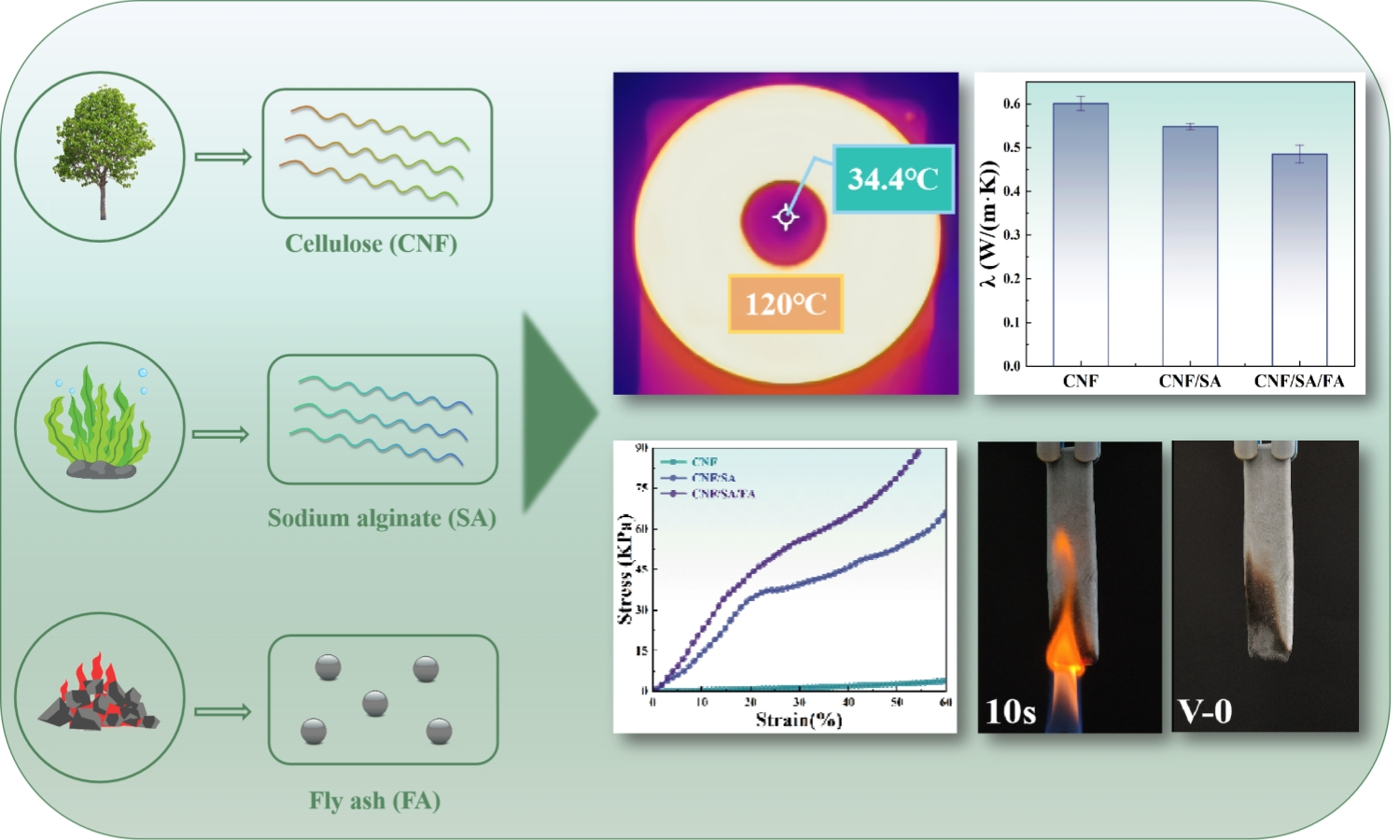
The widespread use of cellulose nanofiber (CNF)-based aerogels is hindered by their limited flame retardancy and mechanical properties. This study addresses these challenges by developing cellulose nanofiber/sodium alginate/fly ash (CNF/SA/FA) aerogel through a one-pot method, utilizing industrial waste fly ash (FA) as a reinforcing material. Various characterization and analytical techniques were employed to evaluate the properties of the CNF/SA/FA aerogel. The findings have revealed that resulting aerogel exhibited excellent thermal insulation performance, with a thermal conductivity of 0.485 W/(m·K), along with an impressive compressive strength of 88.4 kPa and favorable shape processability. Vertical combustion tests demonstrated a V-0 rating, indicating superior flame retardancy, and the aerogel achieved a remarkable 79.16% residual carbon, confirming their effective heat shielding capabilities. Notably, the incorporation of FA significantly enhanced both the thermal and mechanical properties of the composite aerogel, presenting a sustainable and effective solution to optimizing the properties of aerogel for thermal insulation.
Muhammad Akmal, Hafiza Mehtab, Rimsha Amjad, Fauzia Iqbal, Ahmad Irfan, Robina Begum, Zahoor H. Farooqi
Vol. 18., No.11., Pages 1109-1134, 2024
DOI: 10.3144/expresspolymlett.2024.85
Vol. 18., No.11., Pages 1109-1134, 2024
DOI: 10.3144/expresspolymlett.2024.85
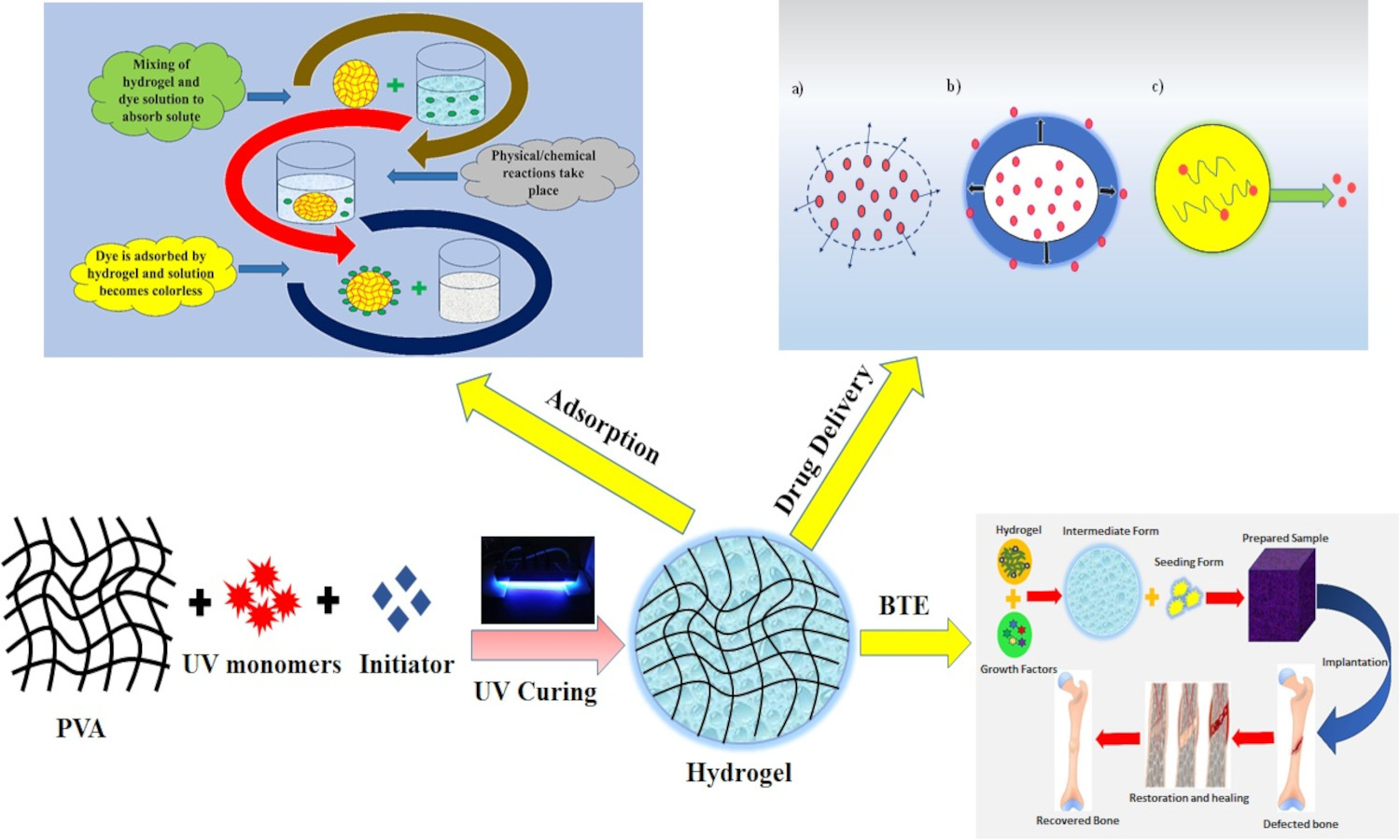
Poly(vinyl alcohol) (PVA) based hydrogels have gained more interest in the field of biomaterials because of their many biomedical uses (i.e., wound healing, drug delivery, and tissue engineering) and intrinsic physicochemical and biological characteristics. They can be made using a variety of synthetic techniques, but all of them are very time-consuming. Among them, photopolymerization also referred to as light-induced polymerization, has drawn a lot of attention because of its benefits, which include not requiring the use of solvents, easy and quick network formation, energy efficiency, quick processing, control over both space and time and reliability of crosslinking density and matrix strength. Ultraviolet (UV)-curable hydrogels containing PVA as a main component are gaining interest because of their excellent properties, including biodegradability, biocompatibility, less cytotoxicity and remarkable mechanical strength. This review highlights the significance of UV curable systems and their components, types, advantages and disadvantages of photoinitiators (PIs), UV curable monomers and their structures, properties of UV-cured PVA hybrid hydrogels, and their characterizations and applications in different fields. The photopolymerization mechanisms, tunable properties, and unique advantages of these hydrogels have been explored in detail. Furthermore, it sheds light on recent advancements in PVA-based hydrogels research and future exploration in this domain.
László Lendvai, Alessandro Pegoretti
Vol. 18., No.10., Pages 962-963, 2024
DOI: 10.3144/expresspolymlett.2024.73
Vol. 18., No.10., Pages 962-963, 2024
DOI: 10.3144/expresspolymlett.2024.73
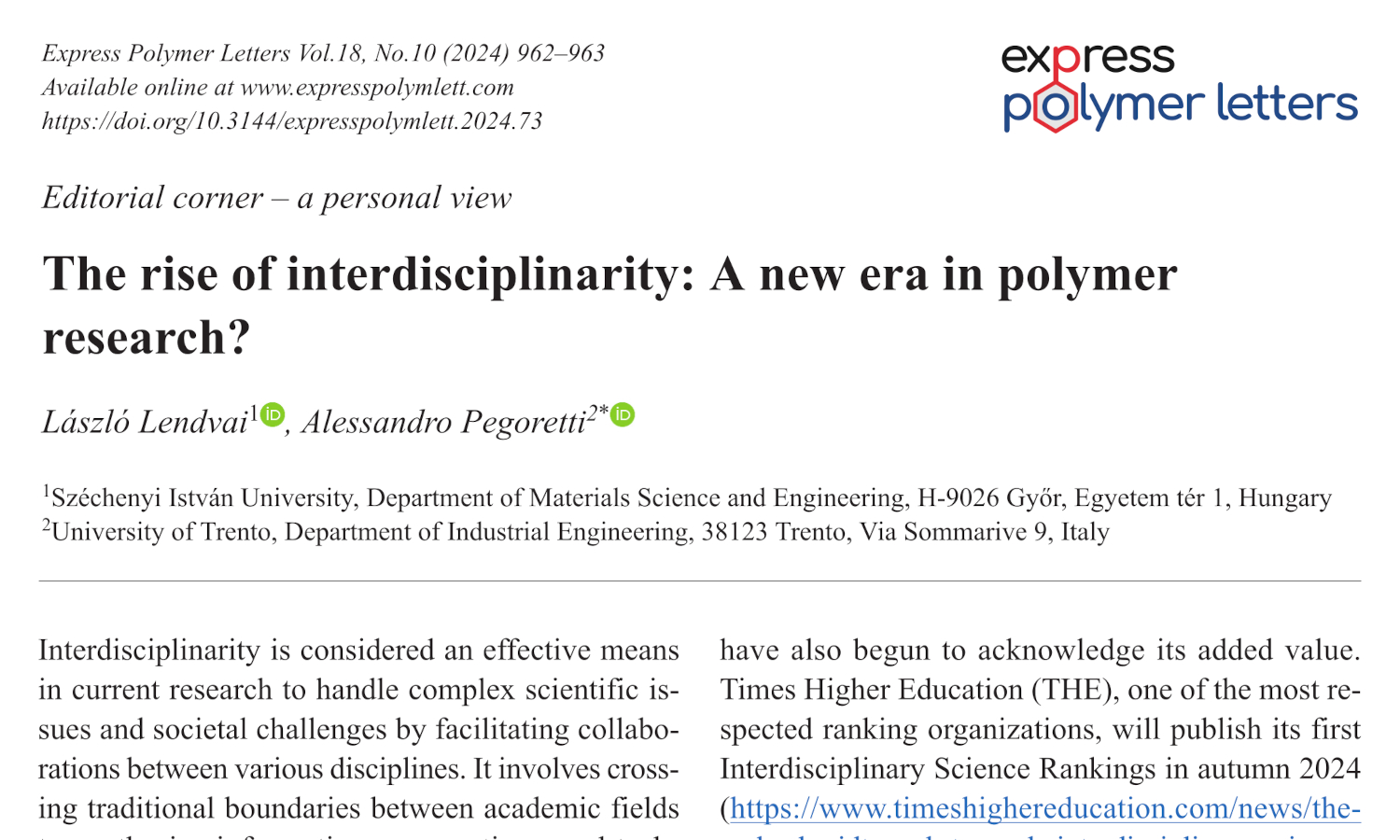
This is an editorial article. It has no abstract.
Chin-San Wu, Shan-Shue Wang, Dung-Yi Wu, Wanwen Gu
Vol. 18., No.8., Pages 835-850, 2024
DOI: 10.3144/expresspolymlett.2024.62
Vol. 18., No.8., Pages 835-850, 2024
DOI: 10.3144/expresspolymlett.2024.62
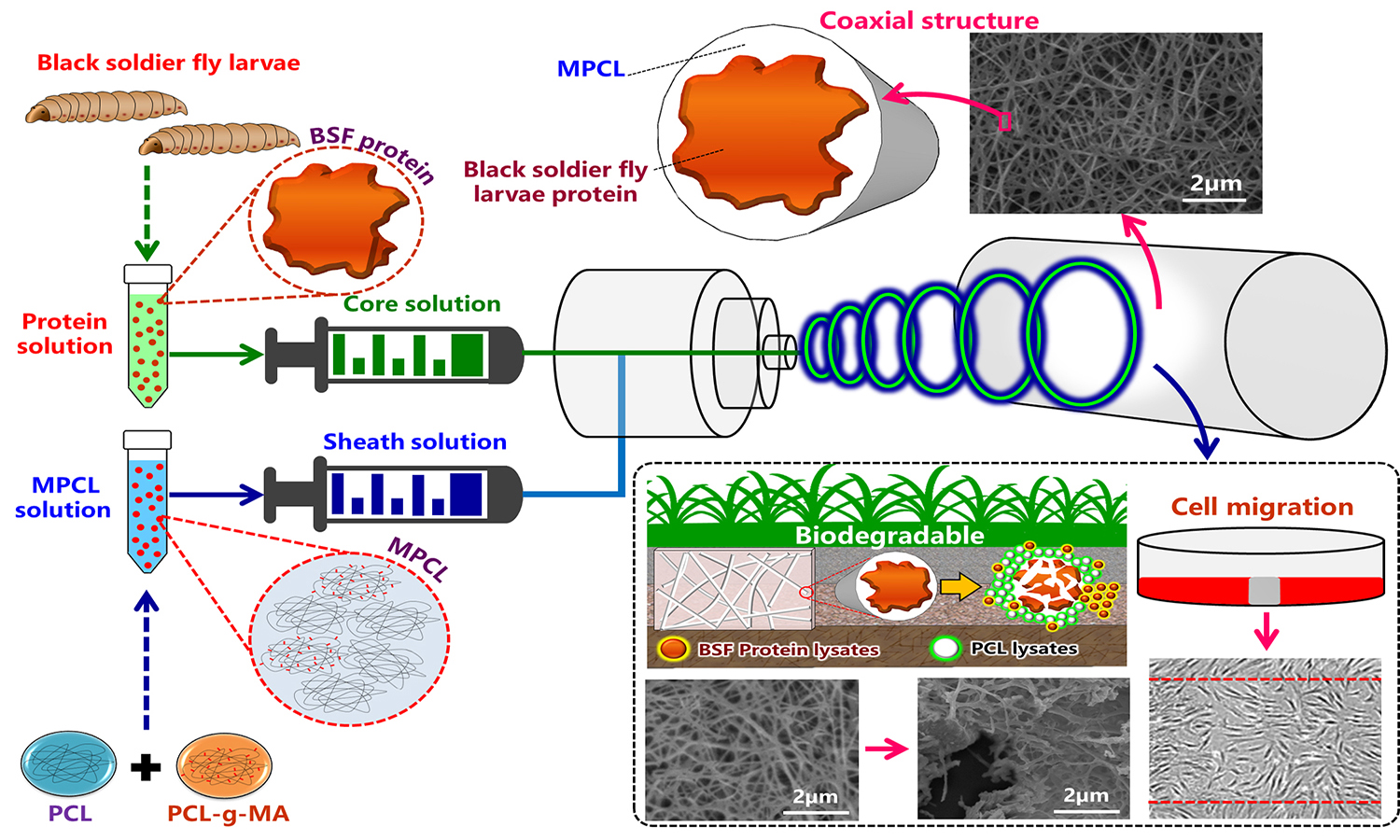
The protein from black soldier fly larvae was used as a functional ingredient of a novel green nanofiber. Larvae protein powder (LP) was blended with biodegradable poly(ε-caprolactone) (PCL) and processed in an electrospinning machine using a coaxial feeding/mixing method to produce nanofibers approximately 100–350 nm in diameter. To improve the dispersion and interface bonding of various PCL/LP nanofiber components, a homemade compatibilizer, maleic anhydridegrafted poly(ε-caprolactone) (MPCL), was added to form MPCL/LP nanofibers. The structure, morphology, mechanical properties, water absorption, cytocompatibility, wound healing, and biodegradability of PCL/LP and MPCL/LP nanofiber mats were investigated. The results showed enhanced adhesion in the MPCL/LP nanofiber mats compared to PCL/LP nanofiber mats; additionally, the MPCL/LP nanofibers exhibited increases of approximately 0.7–2.2 MPa in breaking strength and 9.0–22.8 MPa in Young’s modulus. Decomposition tests using a simulated body fluid revealed that the addition of LP enhanced the decomposition rate of both PCL/LP and MPCL/LP nanofiber mats and in vitro protein release. Cell proliferation and migration analysis indicated that PCL, MPCL, and their composites were biocompatible for fibroblast (FB) growth. Biodegradability was tested in a 30 day soil test. When the LP content was 20 wt%, the degradation rate exceeded 50%.



